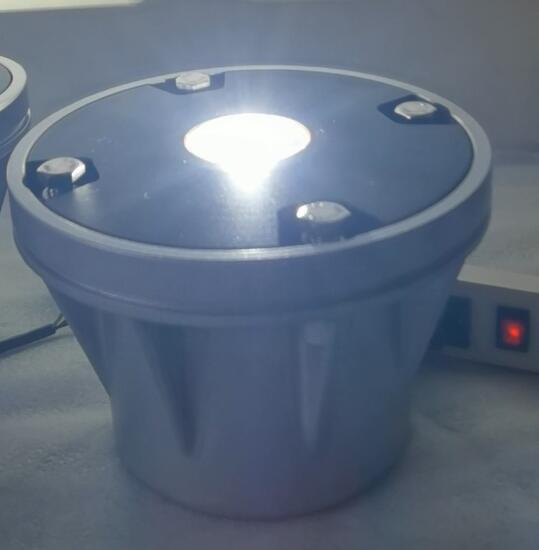Helipad LED Lights: Illuminating Safe Landings with Precision
In the high - stakes world of aviation, every detail matters, and helipad LED lights stand as a crucial element in ensuring the safety and efficiency of helicopter operations. These lights play a pivotal role in guiding helicopters during takeoffs and landings, especially in low - visibility conditions.
The Fundamental Role and Significance
Helipad LED lights are designed to provide clear visual cues to helicopter pilots. Their primary function is to mark the boundaries, centerline, and touchdown zones of a helipad. In the dark or during adverse weather such as fog, rain, or snow, these lights become the pilot's lifeline, enabling them to approach and land the helicopter with confidence. For instance, a clear - cut centerline marked by LED lights helps the pilot align the helicopter accurately during the final descent, reducing the risk of veering off - course.
Working Principles and Technical Features
Light - Emitting Diode (LED) Technology: LED lights used in helipads are based on semiconductor technology. When an electric current passes through the semiconductor material, electrons recombine with electron holes, releasing energy in the form of light. This process is highly efficient, consuming less power compared to traditional lighting sources like incandescent bulbs.
Color - Coded Signaling: Helipad LED lights are color - coded to convey specific information. The edge lights are often blue, which clearly defines the perimeter of the helipad. The centerline lights are typically white or green, guiding the pilot along the correct path. Touchdown zone lights may be a combination of white and red, indicating the optimal area for the helicopter to land.

Advantages Over Traditional Lighting
Energy Efficiency: LED lights are far more energy - efficient than traditional lighting options. They consume significantly less electricity while providing the same or even brighter illumination. This not only reduces the operational costs of the helipad but also contributes to a more sustainable aviation environment.
Long Lifespan: With a lifespan of up to 50,000 hours or more, LED lights require less frequent replacement. This is a major advantage in helipads, where maintenance can be challenging and costly. Reduced replacement frequency means less downtime for the helipad and increased reliability.
| helipad led lights |
| helipad led light |
Fast Response Time: LEDs have an extremely fast response time, turning on and off almost instantaneously. This is crucial in aviation, as it allows for quick adjustments in lighting signals, such as flashing lights for emergency situations.
Diverse Applications in Helipad Operations
Commercial and Private Helipads: In commercial helipads, such as those located on top of high - rise buildings in urban centers, LED lights are essential for safe operations. They ensure that helicopters can land and take off smoothly, even in the midst of a busy cityscape. Private helipads also benefit from LED lights, providing a reliable and energy - efficient lighting solution for helicopter owners.
Military Helipads: Military operations often require high - performance lighting systems. Helipad LED lights meet these requirements, offering high - intensity illumination and quick - response signaling. They are also designed to be durable and resistant to harsh environmental conditions, making them suitable for military use in various terrains.
Emergency Medical Service (EMS) Helipads: For EMS helipads, time is of the essence. LED lights enable quick and safe landings, ensuring that medical teams can reach patients in need as soon as possible. The bright and clear illumination provided by LED lights is crucial for emergency responders during critical missions.
Technological Advancements and Future Trends
Smart Lighting Systems: The future of helipad LED lights lies in smart lighting systems. These systems can be integrated with other aviation technologies, such as GPS and flight management systems. For example, the lights can be programmed to adjust their intensity based on the distance of the approaching helicopter, providing optimal visibility at all times.
Enhanced Durability and Weather Resistance: As technology advances, LED lights will become even more durable and resistant to extreme weather conditions. New materials and manufacturing techniques are being developed to ensure that these lights can withstand high winds, heavy rain, and extreme temperatures, further enhancing their reliability.
In conclusion, helipad LED lights are an indispensable part of modern aviation infrastructure. Their ability to provide clear, efficient, and reliable illumination is crucial for the safety and success of helicopter operations. As technology continues to evolve, these lights will only become more advanced, further enhancing the safety and efficiency of helipads around the world.
